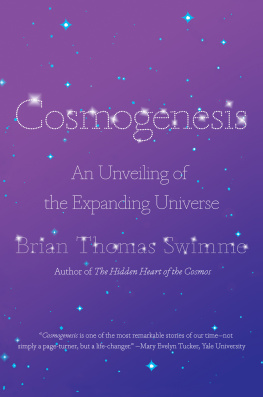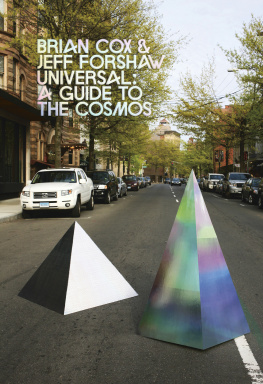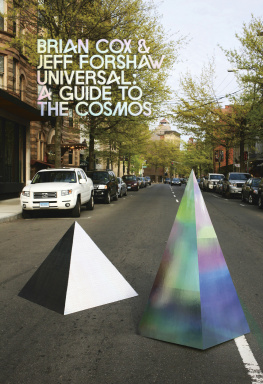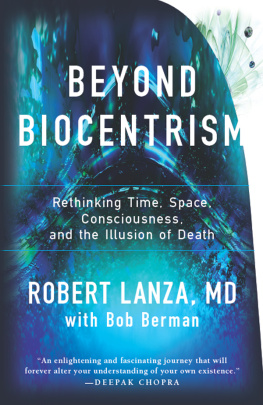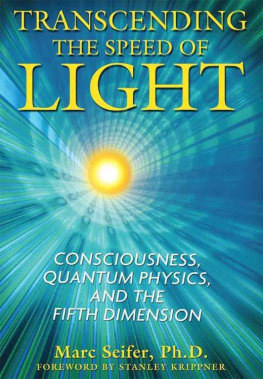A STUDY
OF NUMBERS
A Guide to the Constant
Creation of the Universe
R. A. Schwaller de Lubicz
Translated from the French
by Christopher Bamford

Inner Traditions International
Rochester, Vermont
Translators Note
Ren Schwaller in fact left emphatic instructions that this essay on the study of numbers, written early in his career, should not be republished without a note explaining that the passages concerning point, line, plane, and volume must be corrected in the light of his subsequent research into Egyptian mathematics.
Schwaller came to believe that the metaphor of creation as imaged by the point engendering a line, the line engendering a surface, and a surface engendering a volume was an arbitrary, misleading adaptation of Greek thought (Euclid and Aristotle). In contrast to this view, he presented his interpretation that the entirety of Egyptian philosophical mathematics was based on the notion that the primary expression of being is not the philosophical point but the three-dimensional volume. Hence he wrote in Le Temple de lHomme, Everything that exists is a volume... therefore a point is the apex of a volume, a line is the edge of a volume, and a surface is the face of a volume. These three components (point, line, and plane), when considered by themselves, are abstract concepts expressive only of mental ideation with no basis in the three-dimensional world of physical embodiment. By accepting the original state as volumetric, the physical world, which is also exclusively three-dimensional, then reflects the essential nature of its creative origins. Saint Bernard restated this Egyptian philosophical theme: What is God? God is length, width, and depth.
Schwaller considered, furthermore, that Greek philosophy, in adopting the image of Original Being as point-like rather than volume-like, had helped to deviate the primary paradigms of Western thought toward the reductionist and mechanist assumptions that so plague modern mans relations to the natural world. All our thinking, designing, and engineering practices follow this model of using two-dimensional diagrams of points, lines, and planes, which are then superimposed on to the physical world of volume. But the reality of the natural world is exclusively three-dimensional, and, like a volume, inseparably binds opposed states: surface and interior; front and back; inside and outside; and top and bottom.
Much of Schwallers subsequent work demonstrates the adherence of the ancient Egyptian mind to a volumetric model of reality, creating a technique of thought and a mathematics of an entirely different character and directive than our present ones derived from Euclidian and Aristotelian forms. This difference, Schwaller felt, has lead Western mathematics, science, and philosophy in the direction of predominantly abstract mental games, lacking the vitality and paradox necessary to create a harmonic dialogue between mind and nature. For these reasons, Schwaller warns against the error of youth contained in this otherwise insightful and informative exposition.
Foreword
Whenever our spirit or mind wishes to sift out from among the chaos of cosmic phenomena the truth, or at least the most likely reason for the being of things and their life, it needs a guide.
This need to simplify the worlds appearance, to reduce it to a simple expression, may be the fact of our inability to extend our view beyond a certain limited horizon, an inability resulting from the imperfection of our sensory organization.
Whether this is so, or whether the world is really of so disorganized a complexity that it cannot be understood in its totality, amounts to the same thing. In any case, irrespective of whether or not the idea is accepted by people uninstructed in occult teachings, our sensory organization clearly seems to be imperfect. It is therefore capable of being perfected, though not by a sensitive completion of the senses, the sensory memory, or the natural mnemonic functions, but by a perfecting of consciousness. This latter requires the determination of reactives (senses), corresponding to the energetic activities and influences of the environment.
We lack direct consciousness of Space and Time. We can only know them indirectly by means of mass, force, and energy, and by the intermediary of phenomena which may be tested by one or another of our five senses. Human beings thus lack the two senses necessary for a knowledge of all causes. From this imperfection, of which we are always being made aware, the need is born to simplify. By this need everything is reduced to fundamental properties, without any attention ever being paid to the form of all the various effects of this universal organization. The result is that the science of numbers, the most wonderful guide to the continual creation of the universe, remains an enormous hypothesis. It will remain so as long as its use has not awakened in us the higher consciousness that usually escapes us, as long as we have not, by a deepened knowledge of things and their becoming, come to recognize numbers as truth, and as long, finally, as we have not experienced with our senses that the living relation of a cause to an effect is truer and more real than the effect could ever be.
Between a hypothesis and the truth exists a world; this world is the battlefield of reason and emotion, which we define as the pure sensibility of the sensesan abstraction formed from actual sensation. In this world the logical reverie of the scientist and the ecstasy of the mystic meet; the first is analytic, the second synthetic, and both lead to the recognition of the science of numbers as the science of the basic laws of the universe, the science which fixes the proportions of the building, indicating the position of each stone and determining its moment of construction or destruction: the Architects plan.
That there have been men who knew how to read this plan cannotwithout doubting all historybe doubted. To cite but two examples, Plato testifies to the existence of a Pythagorean science, and Judaism attests to the truth of the Kabbalah.
To undertake the study of numbers in a fruitful manner, we believe it to be necessary to adopt the following general plan of study.
The five essential points, the basis of the study, will be observed in the following order:
- Numbers, values and relations
- The disengagement of numbers
- The harmonic basis of numbers
- The development of values
- The establishment of harmony
1. Numbers are expressed by the figures 0, 1, 2, 3, and so on, up to 10. Here one will note immediately the double nature attached to numbers. There are, to begin with, numbers in themselves, forming a qualitative relation between each other. This is the relation between unity and multiplicity, with a fixed quantity of degrees and variation. Following it, there is the quantitative relation which results from counting things and defining a quantitative relation between them.
In this qualitative and quantitative function we may discern both the nature of numbers, their immanent, abstract life, and the value of numbers, their manifested, concrete life.
By the abstract nature of numbers, I mean the vital bond that exists between things. By the concrete nature of numbers, I mean the manifestation of life under its many material, accidental aspects: weight, density, color, etc.
These two aspects of the nature of numbers have a common function: succession, by which the past, the present, and simultaneity, as well as the future, are defined.
Everything, in all things, may therefore be traced back to numbers, which are the last (or first) manifestation of matter, and the first cause of the creative
Next page

